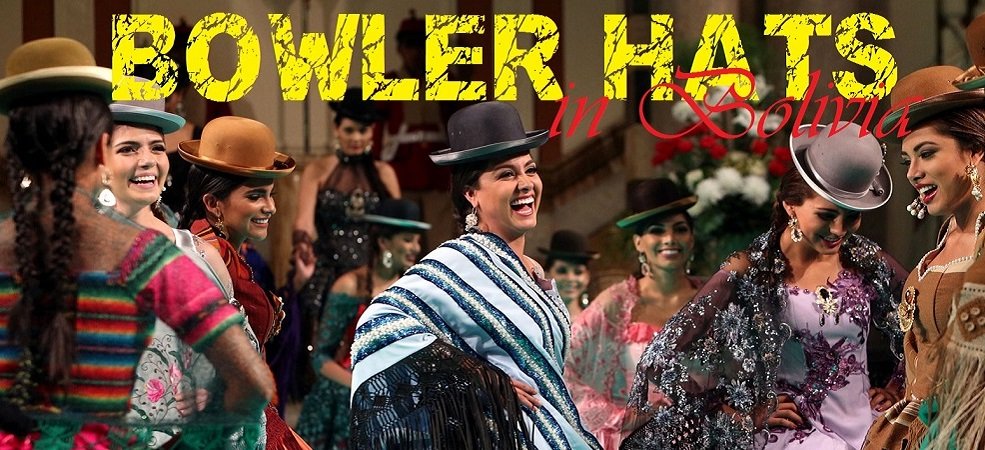One of the things that sticks in the mind of most visitors to La Paz is the traditional dress of many of the local women – a bowler hat worn slanted on the head and a long decorative skirt called a pollera or often 2,3 or more of them!
These distinctive looking residents of the capital city are known as cholas or cholitas and have been wearing this traditional dress for many years.
The bowler hat (or derby hat as it is also known) always seems too small for the owner and can be perched on top of the head tilted to one side or set straight (apparently this is to signify if they are married or unmarried).
These hats are a source of pride for the cholas and theft of these hats straight from the wearers head has been a problem in La Paz and El Alto in the past. At a cost ranging from US$50 to US$200 it is not so surprising as US$200 is about what an average Bolivian earns in a whole month.
The hats always seem sparkling clean and brand new and its not uncommon to see cholas covering their hats with plastic wrap when it rains to keep them that way.
The wearing of the hat originates from the times when they were in fashion in Europe and were also worn by the upper class Spaniard settlers in La Paz. For a long time people of mixed Spanish and indigenous blood were not respected by either the Spanish or the indigenous population, as pure blood was seen as the ideal by both sides.
The Spanish thought the indigenous to be simple and savage people whilst the indigenous despised the Spanish for the invasion of their homelands and maltreatment of them. Due to there being less Spanish women than Spanish men it was inevitable that some would take wives from the indigenous population and as time went on the mestizo population (mixed Spanish and indigenous blood) started to increase.
The mixed race women became known as Cholas and the traditional dress was most likely adapted from a mix of the Spanish fashion of the time and the indigenous traditional dresses in order to give themselves a sense of identity. Originally the men were known as cholos but today this is seen as a derogatory term and is not often heard.
The long flowing skirt that is worn by the cholas is known as a pollera and is often covered in sequins with decorative seams. Beneath the pollera is usually a layer of underskirts called centros. As many as 20 polleras and centros can be worn together (not uncommon in festivals) although a combination totaling 3 or 4 is more likely. This can make these tough looking women seem extremely wide and definitely makes them hard to pass on the narrow streets!
To the unknowing tourist it seems like many of the cholas wear very similar clothing and that fashion must be an unknown entity to them but in fact each year there are new styles of pollera, different fabrics in season and even chola fashion shows. The style of the hat pretty much stays the same from year to year, possibly due to the cost.
Whilst the chola style of dress is still very much in evidence in La Paz, like so many places, things are changing . More and more the young girls are turning to western style dress and forsaking the traditional costume of their mothers, at least in their day to day lives.
This is to be expected really as more indigenous are entering higher education and pursuing professional careers. Culturally it is expected that they wear more business like attire to become successful. You will find many indigenous girls in the universities of La Paz these days but are unlikely to find any wearing a pollera and hat.
Maybe for the first time since the chola traditional dress was adopted a difference of opinion regarding fashion has developed between daughters and mothers but there doesn’t seem to be a danger of the traditional costume disappearing altogether. It still features strongly in festivals and formal celebrations for both young and old alike.


3 comments
[…] hats. They seem to be a status symbol and worn with a lot of pride. Read some more about it here. Link They cost $50-200 and putting that in relationship to an average monthly salary of $200 this is a […]
you didn’t answer your own statement listed in the title
I would say that stating that they are a source of pride references the importance, at least to some degree – but it is an overall discussion that pertains to the importance of the hat as a symbol of identity